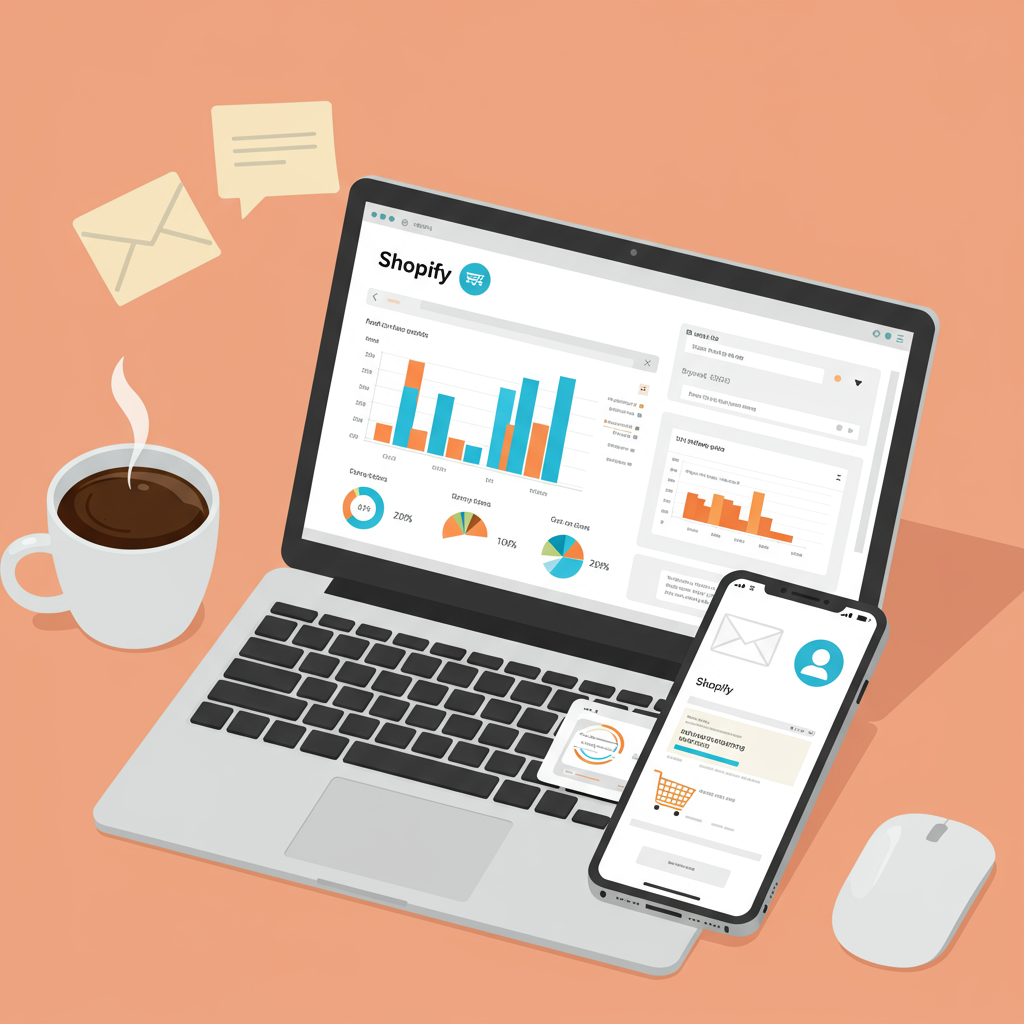How I Streamlined My Store’s Growth and Boosted Sales on Autopilot
Hello fellow Shopify merchants! Today, I want to talk about something that has truly transformed how I run my online store: marketing automation.
If you’re like me, you’re constantly looking for ways to streamline operations, save time, and ultimately, boost sales without having to be glued to your computer 24/7.
That’s precisely where marketing automation steps in. It’s about setting up systems that automatically perform marketing tasks based on specific triggers or customer behaviors.
Think of it as having a tireless, always-on marketing assistant working for you, nurturing leads, engaging customers, and driving conversions, even while you sleep.
For Shopify store owners, this isn’t just a nice-to-have; it’s becoming an essential component of a successful e-commerce strategy.
Why is it so crucial for us? Well, it allows us to personalize customer experiences at scale, ensuring the right message reaches the right person at the right time.
This personalization leads to higher engagement rates, improved customer loyalty, and, most importantly, a significant increase in your bottom line.
I’ve found that the core areas where marketing automation shines for Shopify are email marketing, SMS marketing, and even some aspects of social media and ad retargeting.
Let’s dive into the tools first. Shopify itself offers “Shopify Flow,” a powerful automation tool built right into the platform, especially useful for Plus merchants but with growing capabilities for all.
Beyond Flow, I’ve personally leveraged dedicated email marketing platforms like Klaviyo or Mailchimp, which offer robust automation features specifically tailored for e-commerce.
For SMS, platforms like Postscript or Attentive integrate seamlessly with Shopify, allowing for automated text message campaigns.
Now, let’s talk about specific automation flows that I’ve implemented and seen great success with. The first, and perhaps most critical, is the abandoned cart recovery sequence.
I set up a series of emails (and sometimes an SMS) that automatically trigger when a customer adds items to their cart but leaves without completing the purchase.
My first email goes out within an hour, a gentle reminder. The second, perhaps 24 hours later, might offer a small incentive like free shipping.
Another indispensable automation is the welcome series for new subscribers or customers. This is my chance to introduce my brand, share my story, and offer a first-time purchase discount.
I typically structure this as 3-5 emails over a week, building rapport and guiding them towards their first purchase.
Post-purchase automations are equally vital. After a customer makes a purchase, I send a thank-you email, provide shipping updates, and later, ask for a product review.
This not only enhances the customer experience but also helps me gather valuable social proof, which is gold for future sales.
I also implement win-back campaigns for customers who haven’t purchased in a while. After, say, 60 or 90 days of inactivity, they receive an email with a special offer to entice them back.
For product-specific automations, I often set up flows based on product views. If someone views a specific product multiple times but doesn’t add it to their cart, I might send a follow-up email showcasing that product or related items.
Setting these up requires a bit of planning. I always start by mapping out the customer journey and identifying key touchpoints where automation can add value.
Then, I choose my platform, connect it to Shopify, and begin building the flows. Most platforms offer intuitive drag-and-drop builders, making the process surprisingly straightforward.
It’s crucial to segment your audience. Sending generic messages won’t yield the best results. I segment based on purchase history, browsing behavior, location, and more.
A/B testing is another practice I swear by. I constantly test different subject lines, call-to-action buttons, and even email content to optimize my automation performance.
And don’t forget to monitor your results! I regularly check open rates, click-through rates, conversion rates, and revenue generated by each automation flow.
This data helps me refine my strategies and ensure my automated campaigns are always performing at their peak.
My advice to you is to start small. Pick one or two key automations, like abandoned carts and a welcome series, master them, and then expand.
The beauty of marketing automation is its scalability. Once set up, it continues to work for you, freeing up your time to focus on product development, customer service, or other growth initiatives.
It’s an investment that pays dividends by creating a more personalized, efficient, and profitable customer experience.
What do you think about implementing these automation strategies in your own Shopify store? I’d love to hear your thoughts!






